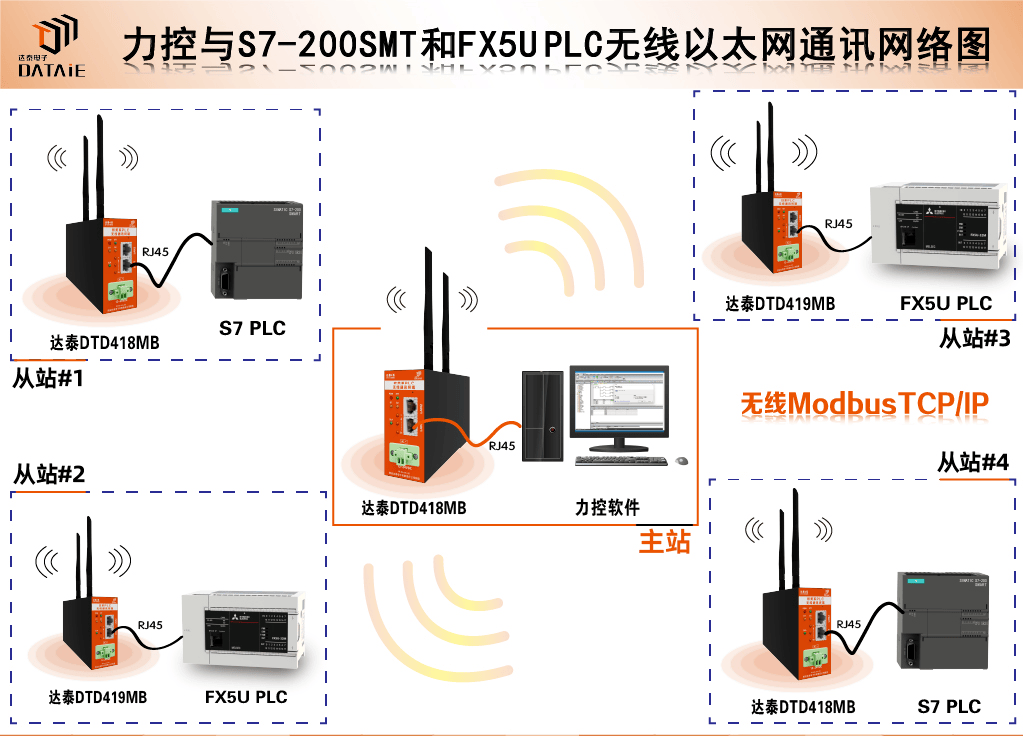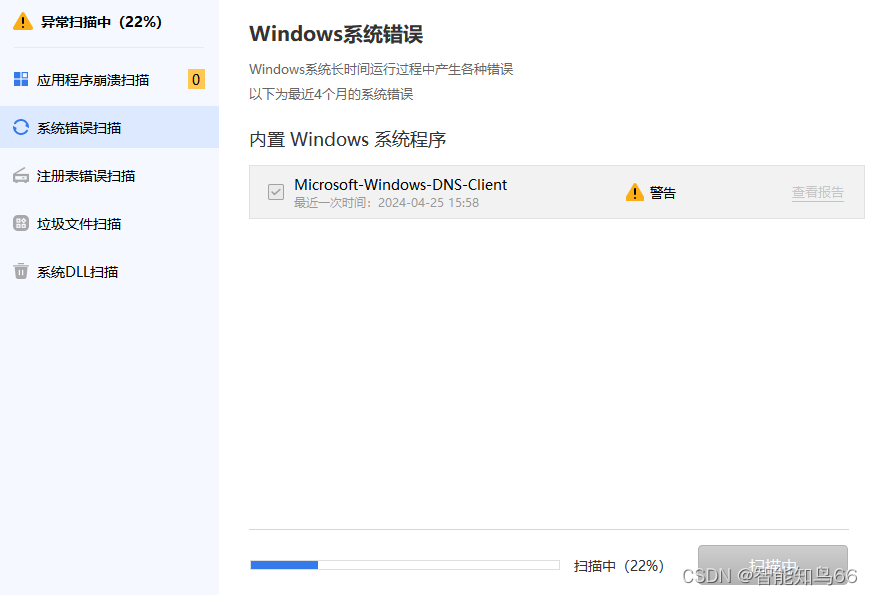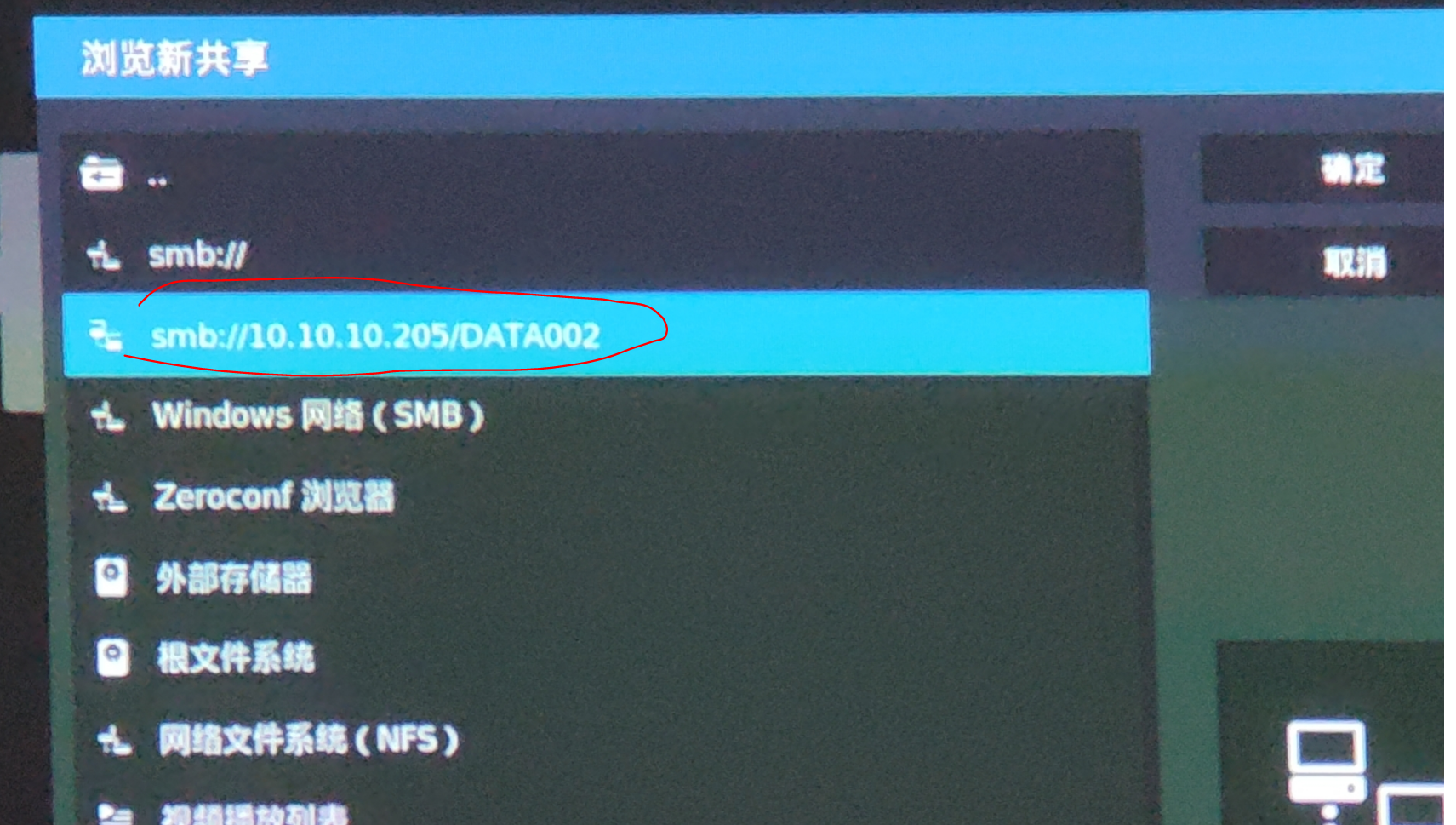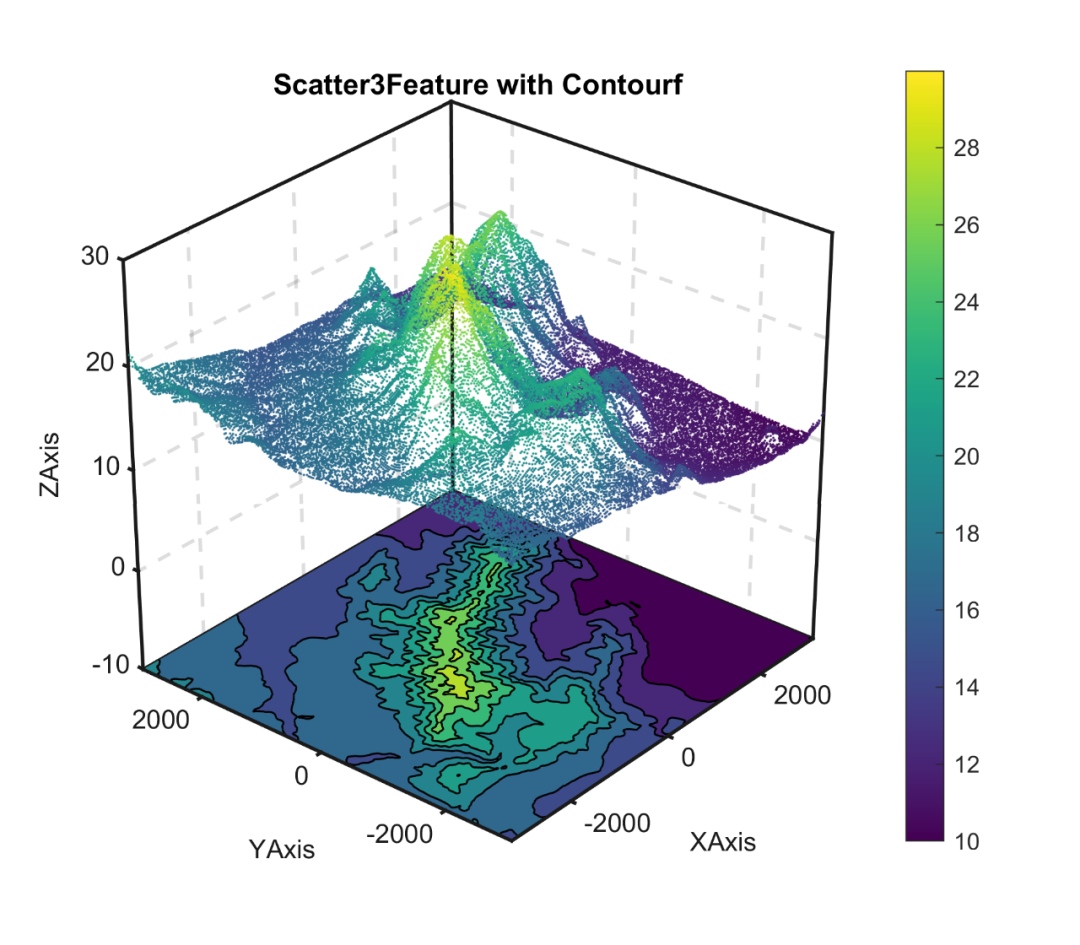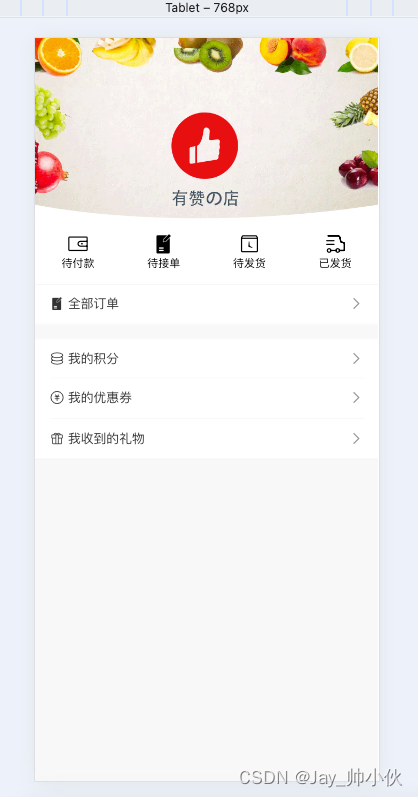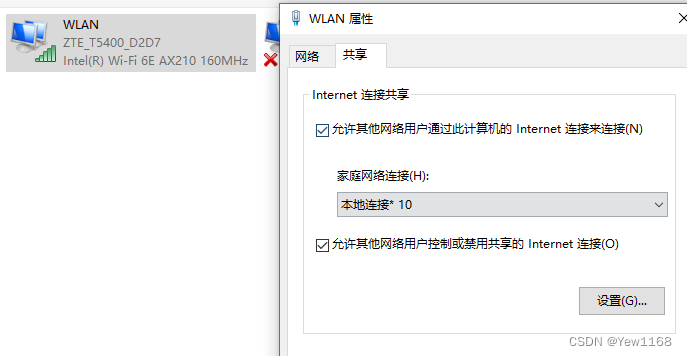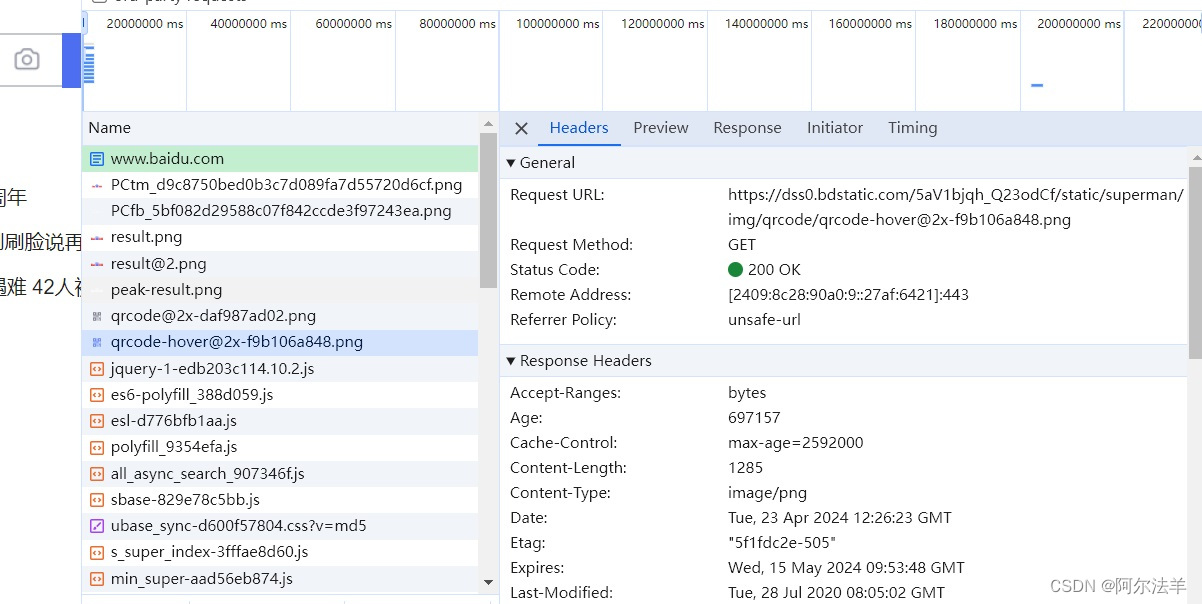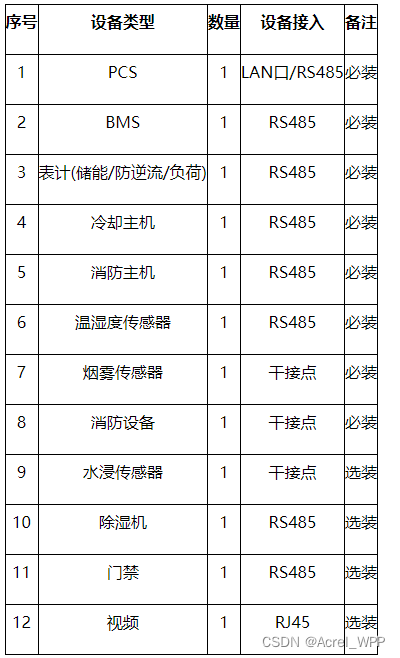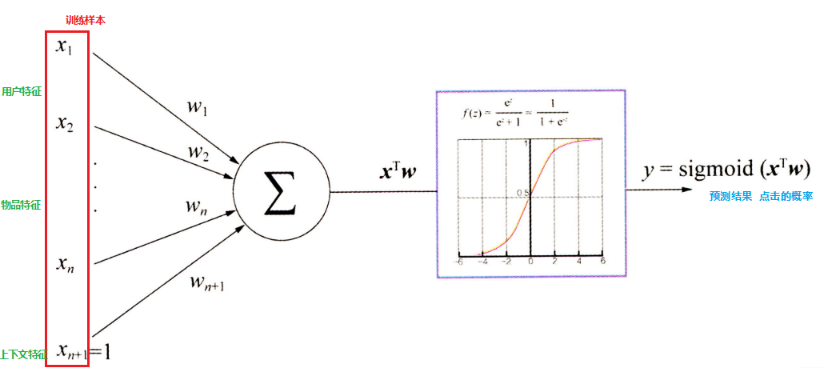一、简单工厂模式
#!/usr/bin/env python
# -*- coding: utf-8 -*-
# @Time : 2024-04-26 20:24
# @Author : Maple
# @File : 01-简单工厂模式.py
from abc import ABC,abstractmethod
# 1. 简单入门
class Dog:
def speak(self):
return "I am Dog"
class Cat:
def speak(self):
return "I am cat"
class MyFactory1:
@staticmethod
def getAnimal(name):
if name == "dog":
return Dog()
elif name == "cat":
return Cat()
else:
raise ValueError("请输入正确的类型")
# 2. 进阶1:增加一个注册类的功能
class MyFactory2:
cls_dict = {}
@classmethod
def register_cls(cls,name,clss):
cls.cls_dict[name] = clss
@classmethod
def get_obj(cls,name):
kls = cls.cls_dict.get(name)
if kls is None:
raise ValueError(f"Plugin with name {name} not registered.")
else:
return kls()
class Person:
pass
class Student:
pass
# 3. 进阶2:利用抽象类
# 抽象工厂类
class UIFactory:
def create_button(self):
raise NotImplementedError
def create_textbox(self):
raise NotImplementedError
# 具体工厂类:Windows
class WindowsUIFactory(UIFactory):
def create_button(self):
return WindowsButton()
def create_textbox(self):
return WindowsTextbox()
# 具体工厂类:MacOS
class MacOSUIFactory(UIFactory):
def create_button(self):
return MacOSButton()
def create_textbox(self):
return MacOSTextbox()
# 抽象产品类:Button
class Button:
def render(self):
raise NotImplementedError
# 抽象产品类:Textbox
class Textbox:
def render(self):
raise NotImplementedError
# 具体产品类:Windows Button
class WindowsButton(Button):
def render(self):
return "Rendering a Windows style button"
# 具体产品类:Windows Textbox
class WindowsTextbox(Textbox):
def render(self):
return "Rendering a Windows style textbox"
# 具体产品类:MacOS Button
class MacOSButton(Button):
def render(self):
return "Rendering a MacOS style button"
# 具体产品类:MacOS Textbox
class MacOSTextbox(Textbox):
def render(self):
return "Rendering a MacOS style textbox"
# Usage
def client_code(factory: UIFactory):
button = factory.create_button()
textbox = factory.create_textbox()
print(button.render())
print(textbox.render())
# 4. 进阶3:要创建的类带初始化参数,并且不同的子类参数不一样
class Character:
def __init__(self, name, level):
self.name = name
self.level = level
def __str__(self):
return f"{self.name}, Level {self.level}"
class Warrior(Character):
def __init__(self, name, level, weapon):
super().__init__(name, level)
self.weapon = weapon
def __str__(self):
return f"{super().__str__()}, armed with {self.weapon}"
class Mage(Character):
def __init__(self, name, level, element):
super().__init__(name, level)
self.element = element
def __str__(self):
return f"{super().__str__()}, wielding {self.element} magic"
class CharacterFactory:
@staticmethod
def create_character(type, name, level, **kwargs):
if type == "warrior":
return Warrior(name, level, kwargs.get('weapon', 'sword'))
elif type == "mage":
return Mage(name, level, kwargs.get('element', 'fire'))
else:
raise ValueError("Unknown character type")
if __name__ == '__main__':
print('*******1. 简单入门测试*****************')
# 1. 简单入门测试
dog = MyFactory1.getAnimal("dog")
print(dog.speak())
cat = MyFactory1.getAnimal("cat")
print(cat.speak())
print('*******2. 进阶测试-1*******************')
# 2. 进阶测试-1
MyFactory2.register_cls('Person',Person)
MyFactory2.register_cls('Student',Student)
p = MyFactory2.get_obj('Person')
print(p)
s = MyFactory2.get_obj('Student')
print(s)
# 3. 进阶测试-2
print('*******3. 进阶测试-2*******************')
# Depending on the OS environment, we might choose a different factory
current_os = 'Windows' # This could be determined by some runtime check
if current_os == 'Windows':
factory = WindowsUIFactory()
elif current_os == 'MacOS':
factory = MacOSUIFactory()
"""
Rendering a Windows style button
Rendering a Windows style textbox
"""
client_code(factory)
# 4. 进阶测试-3
print('*******4. 进阶测试-3*******************')
warrior = CharacterFactory.create_character("warrior", "Aragorn", 5, weapon="long sword")
mage = CharacterFactory.create_character("mage", "Gandalf", 10, element="lightning")
print(warrior) # Output: Aragorn, Level 5, armed with long sword
print(mage) # Output: Gandalf, Level 10, wielding lightning magic
二、代理模式
#!/usr/bin/env python
# -*- coding: utf-8 -*-
# @Time : 2024-04-26 22:03
# @Author : Maple
# @File : 02-代理模式.py
"""
代理设计模式是一种结构型设计模式,允许对象在访问另一个对象时提供一个代替品或占位符。
这样可以控制对这个对象的访问,添加额外的功能或者管理生命周期等。在Python中实现代理模式通常涉及定义一个代理类,
该类包含对实际对象的引用,并通过重写方法以添加额外的行为。
"""
"""
例子1:简单的保护代理
在这个简单的例子中,代理类控制对另一个类的访问,只有当满足特定条件时才允许访问
"""
class SensitiveInfo:
def display_info(self):
return "Sensitive Information: Only authorized users can see this."
class ProtectedProxy:
def __init__(self, user):
self.user = user
self._sensitive_info = SensitiveInfo()
def display_info(self):
if self.user == "authorized_user":
return self._sensitive_info.display_info()
else:
return "Access Denied: You are not authorized to access this information."
"""
例子2:虚拟代理
这个例子中,代理类延迟实际对象的创建,只有在真正需要时才创建,用于节省资源或延迟计算开销。
"""
class HeavyObject:
def __init__(self):
import time
time.sleep(2) # Simulating a heavy creation task
print("Heavy Object Created")
def process(self):
return "Processing complete."
class VirtualProxy:
def __init__(self):
self._object = None
def process(self):
# 当真正需要调用HeavyObject的process方法时,才会去创建HeavyObject实例对象
# 虚拟代理是一种懒加载(Lazy Loading)机制
if self._object is None:
self._object = HeavyObject()
return self._object.process()
"""
例子3:智能引用代理
在更复杂的情况下,代理类可以添加对对象的智能引用管理,比如记录对象操作的次数或实现引用计数。
"""
class DataStore:
def load_data(self):
return "Data loaded"
def save_data(self, data):
print(f"Data saved: {data}")
class LoggingProxy:
def __init__(self, target):
self._target = target
self._load_count = 0
self._save_count = 0
def load_data(self):
self._load_count += 1
print(f"Data load operation count: {self._load_count}")
return self._target.load_data()
def save_data(self, data):
self._save_count += 1
print(f"Data save operation count: {self._save_count}")
return self._target.save_data(data)
"""
例子4:远程代理
远程代理用于控制对远程对象(比如网络上的服务)的访问。远程代理作为本地对象的代表
,通过网络与远程对象进行交互
"""
import requests
class RemoteServiceProxy:
def __init__(self, service_url):
self.service_url = service_url
def fetch_data(self):
response = requests.get(self.service_url)
if response.status_code == 200:
return response.json()
else:
return None
"""
例子 5:缓存代理
缓存代理用于管理对资源密集型对象的访问,它保存结果并在后续请求中重用,以提高效率和速度。
"""
class DataHeavyService:
def complex_query(self, parameters):
# Simulate a complex query
return f"Results for {parameters}"
class CacheProxy:
def __init__(self, target):
self.target = target
self.cache = {}
def complex_query(self, parameters):
if parameters not in self.cache:
self.cache[parameters] = self.target.complex_query(parameters)
return self.cache[parameters]
if __name__ == '__main__':
print("*************案例1:简单的保护代理************")
proxy = ProtectedProxy("authorized_user")
print(proxy.display_info()) # Output: Sensitive Information: Only authorized users can see this.
proxy_unauthorized = ProtectedProxy("unauthorized_user")
print(proxy_unauthorized.display_info()) # Output: Access Denied: You are not authorized to access this information.
print("*************案例2:虚拟代理************")
proxy = VirtualProxy()
print(proxy.process()) # Output: Heavy Object Created\nProcessing complete.
print("*************案例3:智能引用代理************")
data_store = DataStore()
proxy = LoggingProxy(data_store)
print(proxy.load_data()) # Output: Data load operation count: 1\nData loaded
proxy.save_data("Some data") # Output: Data save operation count: 1\nData saved: Some data
print("*************案例4:远程代理************")
proxy = RemoteServiceProxy("https://www.baidu.com")
data = proxy.fetch_data()
print(data) # Outputs the data fetched from the remote service
print("*************案例5:缓存代理************")
service = DataHeavyService()
proxy = CacheProxy(service)
print(proxy.complex_query("param1")) # Slow the first time
print(proxy.complex_query("param1")) # Fast, uses cache
三、单例模式
#!/usr/bin/env python
# -*- coding: utf-8 -*-
# @Time : 2024-04-27 7:05
# @Author : Maple
# @File : 03-单例模式.py
"""
单例模式是一种常见的设计模式,用于确保一个类有且只有一个实例
并提供一个全局访问点来访问这个实例。单例模式通常用于全局状态或共享资源的管理,如配置管理器、连接池等。
"""
"""
案例1:基础单例模式
这是实现单例模式的最基础形式,使用了一个类变量来存储该类的唯一实例。
"""
class Singleton:
_instance = None
@staticmethod
def get_instance():
if Singleton._instance is None:
Singleton._instance = Singleton()
return Singleton._instance
def __init__(self):
if Singleton._instance is not None:
raise Exception("This class is a singleton!")
else:
Singleton._instance = self
def release_instance(self):
Singleton._instance = None
"""
案例2:线程安全的单例模式
在多线程环境中,确保单例实例的创建过程是线程安全的,这通常通过使用线程锁来实现。
"""
from threading import Lock, Thread
class ThreadSafeSingleton:
_instance = None
_lock = Lock() # 创建一个锁
@staticmethod
def getInstance():
if ThreadSafeSingleton._instance is None:
with ThreadSafeSingleton._lock:
if ThreadSafeSingleton._instance is None:
ThreadSafeSingleton._instance = ThreadSafeSingleton()
return ThreadSafeSingleton._instance
def __init__(self):
if ThreadSafeSingleton._instance is not None:
raise Exception("This class is a singleton!")
else:
ThreadSafeSingleton._instance = self
"""
这个例子展示了如何使用Python装饰器来创建一个单例
这种方法将单例的逻辑封装在装饰器中,使得实现单例模式变得更加优雅。
"""
def singleton(cls):
instance = None
def get_instance(*args, **kwargs):
nonlocal instance
if instance is None:
instance = cls(*args, **kwargs)
return instance
return get_instance
@singleton
class DecoratedSingleton:
def __init__(self, value):
self.value = value
if __name__ == '__main__':
print('*******案例1: 基础入门************')
s0 = Singleton()
s1 = Singleton.get_instance()
s2 = Singleton.get_instance()
print(s1 == s2) # Output: True
print(s0 == s1) # Output: True
# 此时Singleton._instance已经不是None了,所以会raise Exception("This class is a singleton!")
try:
s3 = Singleton()
except Exception as e:
print("This class is a singleton!")
# 销毁实例
s0.release_instance()
# 重新创建实例
s4 = Singleton()
print(s4) # <__main__.Singleton object at 0x000002216E63FE80>
s5 = Singleton.get_instance()
print(s4 == s5) # True
print('*******案例2: 线程安全的单例模式************')
def test_singleton():
singleton = ThreadSafeSingleton.getInstance()
print(id(singleton))
threads = [Thread(target=test_singleton) for _ in range(5)]
"""
2566637996160
2566637996160
2566637996160
2566637996160
2566637996160
"""
for thread in threads:
thread.start()
for thread in threads:
thread.join()
print('*******案例3: 使用装饰器的单例模式************')
s1 = DecoratedSingleton(10)
# 第二次传入的初始化参数将被忽略
s2 = DecoratedSingleton(20)
print(s1.value) # Output: 10
print(s2.value) # Output: 10【注意这里仍然是10】
print(s1 is s2) # Output: True
四、观察者模式
#!/usr/bin/env python
# -*- coding: utf-8 -*-
# @Time : 2024-04-27 7:17
# @Author : Maple
# @File : 04-观察者模式.py
"""
观察者模式是一种设计模式,其中一个对象(称为“主题”)维护一组依赖于它的对象(称为“观察者”)
,并在主题的状态发生改变时自动通知它们。这种模式在实现事件处理系统、数据同步等功能时非常有用。
"""
"""
例子1:基本的观察者模式
这个例子中,我们创建了一个简单的新闻发布系统,新闻机构可以订阅新闻服务并在有新新闻时收到通知。
"""
class NewsPublisher:
def __init__(self):
self.subscribers = []
self.latest_news = None
def add_subscriber(self, subscriber):
self.subscribers.append(subscriber)
def remove_subscriber(self, subscriber):
self.subscribers.remove(subscriber)
def notify_subscribers(self):
for subscriber in self.subscribers:
subscriber.update(self.latest_news)
def add_news(self, news):
self.latest_news = news
self.notify_subscribers()
class NewsAgency:
def update(self, news):
print(f"News Agency received news: {news}")
"""
例子2:使用回调函数的观察者模式
这个例子中,我们创建了一个简单的新闻发布系统,新闻机构可以订阅新闻服务并在有新新闻时收到通知。
"""
class EventManager:
def __init__(self):
self.listeners = {}
def subscribe(self, event_type, listener):
if event_type not in self.listeners:
self.listeners[event_type] = []
self.listeners[event_type].append(listener)
def unsubscribe(self, event_type, listener):
if event_type in self.listeners:
self.listeners[event_type].remove(listener)
def notify(self, event_type, data):
if event_type in self.listeners:
for listener in self.listeners[event_type]:
listener(data) # listener是一个回调函数,当触发notify的时候,会调用该方法
def handle_temperature_change(data):
print(f"Temperature Alert: {data} degrees")
def handle_pressure_change(data):
print(f"Pressure Alert: {data} hPa")
"""
案例3:复杂的多主题观察者模式
这个例子中,我们创建了一个可以处理多种事件和多个主题的系统,使得观察者可以订阅多个主题的多种事件。
"""
class MultiSubjectManager:
def __init__(self):
self.subjects = {}
def register_subject(self, subject_name):
if subject_name not in self.subjects:
self.subjects[subject_name] = {}
def subscribe(self, subject_name, event_type, observer):
"""
:param subject_name: 主题
:param event_type: 事件
:param observer: 观察着
:return:
"""
if subject_name in self.subjects:
if event_type not in self.subjects[subject_name]:
self.subjects[subject_name][event_type] = []
self.subjects[subject_name][event_type].append(observer)
def unsubscribe(self, subject_name, event_type, observer):
if subject_name in self.subjects and event_type in self.subjects[subject_name]:
self.subjects[subject_name][event_type].remove(observer)
def notify(self, subject_name, event_type, data):
if subject_name in self.subjects and event_type in self.subjects[subject_name]:
for observer in self.subjects[subject_name][event_type]:
observer(data)
def stock_event_handler(data):
print(f"Stock Event: {data}")
def weather_event_handler(data):
print(f"Weather Update: {data}")
if __name__ == '__main__':
print('*******案例1:基本的观察者模式 **********')
publisher = NewsPublisher()
agency1 = NewsAgency()
agency2 = NewsAgency()
publisher.add_subscriber(agency1)
publisher.add_subscriber(agency2)
publisher.add_news("New economic policies released.")
"""
Output:
News Agency received news: New economic policies released.
News Agency received news: New economic policies released.
"""
print('*******案例2:使用回调函数的观察者模式 **********')
manager = EventManager()
manager.subscribe("temperature", handle_temperature_change)
manager.subscribe("pressure", handle_pressure_change)
"""
Temperature Alert: 26 degrees
Pressure Alert: 1013 hPa
"""
manager.notify("temperature", 26)
manager.notify("pressure", 1013)
print('*******案例3:复杂的多主题观察者模式 **********')
manager = MultiSubjectManager()
manager.register_subject("stock")
manager.register_subject("weather")
manager.subscribe("stock", "price_change", stock_event_handler)
manager.subscribe("weather", "temperature_change", weather_event_handler)
manager.notify("stock", "price_change", "AAPL stock price dropped 2%")
manager.notify("weather", "temperature_change", "Temperature rose to 75°F")
五、建造者模式
#!/usr/bin/env python
# -*- coding: utf-8 -*-
# @Time : 2024-04-27 14:28
# @Author : Maple
# @File : 05-建造者模式.py
"""
例子 1:简单的餐饮包建造者
这个例子中,我们将创建一个简单的快餐餐包建造者,可以组合不同类型的主菜、小吃和饮料。
"""
class Meal:
def __init__(self):
self.items = []
def add_item(self, item):
self.items.append(item)
def get_cost(self):
return sum(item.price for item in self.items)
def show_items(self):
for item in self.items:
print(f"Item: {item.name}, Packing: {item.packing()}, Price: {item.price}")
# 商品抽象类,包含三个属性: 名称, 打包方式, 价格
class Item:
def name(self):
raise NotImplementedError
def packing(self):
raise NotImplementedError
def price(self):
raise NotImplementedError
# 商品打包方式的具体实现类-1
class Wrapper:
def pack(self):
return "Wrapper"
# 商品打包方式的具体实现类-1
class Bottle:
def pack(self):
return "Bottle"
# Burger和Drink代表两类产品
class Burger(Item):
def packing(self):
return Wrapper().pack()
class Drink(Item):
def packing(self):
return Bottle().pack()
# VegBurger是具体的产品--源头是继承item
# 因此会具备item的三个属性: 名称, 打包方式-才Burger中继承而来(Wrapper), 价格
class VegBurger(Burger):
@property
def price(self):
return 25
@property
def name(self):
return "Veg Burger"
# 同上
class ChickenBurger(Burger):
@property
def price(self):
return 50
@property
def name(self):
return "Chicken Burger"
# 同上
class Coke(Drink):
@property
def price(self):
return 15
@property
def name(self):
return "Coke"
# 同上
class Pepsi(Drink):
@property
def price(self):
return 10
@property
def name(self):
return "Pepsi"
class MealBuilder:
def prepare_veg_meal(self):
meal = Meal()
meal.add_item(VegBurger())
meal.add_item(Coke())
return meal
def prepare_non_veg_meal(self):
meal = Meal()
meal.add_item(ChickenBurger())
meal.add_item(Pepsi())
return meal
"""
案例2:复杂的汽车建造者
在这个例子中,我们将创建一个更复杂的汽车建造者,可以选择不同的汽车型号、引擎、内饰等。
"""
class Car:
def __init__(self):
self.features = {}
def add_feature(self, key, value):
self.features[key] = value
def show_details(self):
for feature, value in self.features.items():
print(f"{feature}: {value}")
class CarBuilder:
def __init__(self):
self.car = Car()
def add_model(self, model):
self.car.add_feature("model", model)
return self
def add_engine(self, engine):
self.car.add_feature("engine", engine)
return self
def add_interior(self, interior):
self.car.add_feature("interior", interior)
return self
def build(self):
return self.car
"""
案例3:软件配置建造者
这个例子展示了如何使用建造者模式来构建软件配置文件。这种方法可以动态地创建和管理软件配置,尤其适用于配置项繁多且复杂的场景。
使用场景
这种建造者模式的实现特别适合于需要动态创建复杂配置的应用,例如:
云基础设施配置
多环境部署(开发、测试、生产)
服务端应用配置
这个模式提高了代码的可读性和可维护性,尤其在配置参数众多且频繁变动的系统中,可以显著简化配置管理工作。
"""
class Configuration:
def __init__(self):
self.parameters = {}
def set_parameter(self, key, value):
self.parameters[key] = value
def show_configuration(self):
for param, value in self.parameters.items():
print(f"{param}: {value}")
class ConfigurationBuilder:
def __init__(self):
self.configuration = Configuration()
def set_database(self, db_name):
self.configuration.set_parameter("database", db_name)
return self
def set_server_ip(self, ip):
self.configuration.set_parameter("server_ip", ip)
return self
def set_max_connections(self, max_connections):
self.configuration.set_parameter("max_connections", max_connections)
return self
def set_timeout(self, timeout):
self.configuration.set_parameter("timeout", timeout)
return self
def build(self):
return self.configuration
if __name__ == '__main__':
print('********案例1:餐饮包建造者 *****************')
meal_builder = MealBuilder()
veg_meal = meal_builder.prepare_veg_meal()
veg_meal.show_items()
"""
Item: Veg Burger, Packing: Wrapper, Price: 25
Item: Coke, Packing: Bottle, Price: 15
"""
print(f"Total Cost: {veg_meal.get_cost()}") # Total Cost: 40
non_veg_meal = meal_builder.prepare_non_veg_meal()
non_veg_meal.show_items()
"""
Item: Chicken Burger, Packing: Wrapper, Price: 50
Item: Pepsi, Packing: Bottle, Price: 10
"""
print(f"Total Cost: {non_veg_meal.get_cost()}") # Total Cost: 60
print('********案例2:复杂的汽车建造者 *****************')
builder = CarBuilder()
car = (builder.add_model("Sports Car")
.add_engine("V8 Engine")
.add_interior("Leather Interior")
.build())
"""
model: Sports Car
engine: V8 Engine
interior: Leather Interior
"""
car.show_details()
print('********案例3:软件配置建造者 *****************')
config_builder = ConfigurationBuilder()
configuration = (config_builder.set_database("MySQL")
.set_server_ip("192.168.1.100")
.set_max_connections(100)
.set_timeout(30)
.build())
"""
database: MySQL
server_ip: 192.168.1.100
max_connections: 100
timeout: 30
"""
configuration.show_configuration()
六、适配器模式
#!/usr/bin/env python
# -*- coding: utf-8 -*-
# @Time : 2024-04-27 15:03
# @Author : Maple
# @File : 06-适配器模式.py
"""
适配器模式是一种结构型设计模式,它允许接口不兼容的对象能够合作。
适配器模式通常用于确保由于接口不兼容而无法一起工作的类可以一起工作。
它通过在一个独立的类中封装现有的类,这个独立的类提供了符合目标接口的行为。
"""
"""
例子 1:电源适配器
展示如何使用适配器模式将一个类的接口转换为另一个接口
假设我们有一个只能接受特定电压的设备,而电源插座的输出电压与设备不匹配,我们需要一个适配器来调整电压
"""
# 目标接口
class EuropeanSocketInterface:
def voltage(self):
pass
# 适配者 --电源插座: 230V
class Socket(EuropeanSocketInterface):
def voltage(self):
return 230
# 客户端 - 用户设备: 只能使用120V的插座
class Radio:
def __init__(self, power_source):
self.power_source = power_source
def plug_in(self):
if self.power_source.voltage() == 120:
print("Radio playing music!")
else:
print("Can't use this socket!")
# 适配器
class SocketAdapter(EuropeanSocketInterface):
def __init__(self, socket):
self.socket = socket
# 将电源插座的电压从230V调整到120V
def voltage(self):
return self.socket.voltage() // 1.916
"""
案例2:遗留代码与现代系统的集成
假设我们有一个遗留系统的类,它返回用户数据的格式与新系统不兼容。新系统需要JSON格式,但遗留系统提供的是字典列表。
"""
import json
# 遗留系统
class OldSystem:
def get_user_data(self):
return [{"name": "John", "age": 30}, {"name": "Alice", "age": 25}]
# 新系统的期望接口
class NewSystem:
# 新系统期望处理的是JSON格式的数据
def process_user_data(self, user_data):
print(f"Processing data: {user_data}")
# 适配器
class Adapter:
def __init__(self, old_system):
self.old_system = old_system
def get_user_data(self):
old_data = self.old_system.get_user_data()
# 旧系统返回的数据转换成Json格式
return json.dumps(old_data)
"""
案例3:多个数据库适配
在这个更复杂的例子中,假设我们的应用需要与多种数据库交互,但每种数据库的接口不同。我们可以使用适配器模式统一这些接口。
"""
# 目标接口
class DatabaseInterface:
def connect(self):
pass
def execute(self):
pass
# 适配者:MySQL数据库
class MySQLDatabase:
def connect_mysql(self):
print("Connecting to MySQL database.")
def execute_mysql(self, query):
print(f"Executing '{query}' on MySQL database.")
# 适配者:SQLite数据库
class SQLiteDatabase:
def connect_sqlite(self):
print("Connecting to SQLite database.")
def execute_sqlite(self, query):
print(f"Executing '{query}' on SQLite database.")
# 适配器
class MySQLAdapter(DatabaseInterface):
def __init__(self, mysql_db):
self.mysql_db = mysql_db
def connect(self):
self.mysql_db.connect_mysql()
def execute(self, query):
self.mysql_db.execute_mysql(query)
class SQLiteAdapter(DatabaseInterface):
def __init__(self, sqlite_db):
self.sqlite_db = sqlite_db
def connect(self):
self.sqlite_db.connect_sqlite()
def execute(self, query):
self.sqlite_db.execute_sqlite(query)
"""
案例4:多源输入适配器
在从多个数据源接收数据时,适配器可以帮助统一和标准化数据格式。
"""
class SensorA:
def get_temperature(self):
return 22.5 # Celsius
class SensorB:
def read_temp(self):
return "Temperature is 295.65K" # Kelvin
class SensorAdapter:
def __init__(self, sensor):
self.sensor = sensor
def get_temperature_celsius(self):
if isinstance(self.sensor, SensorA):
return self.sensor.get_temperature()
elif isinstance(self.sensor, SensorB):
kelvin = float(self.sensor.read_temp().split()[-1][:-1])
return kelvin - 273.15 # Convert Kelvin to Celsius
if __name__ == '__main__':
print('******案例1:电源适配器 **************')
socket = Socket()
adapter = SocketAdapter(socket)
radio = Radio(adapter)
radio.plug_in() # Output: Radio playing music!
print('******案例2:遗留代码与现代系统的集成**************')
old_system = OldSystem()
adapter = Adapter(old_system)
new_system = NewSystem()
# adapter.get_user_data()返回的是Json格式的数据,满足新系统的期望
new_system.process_user_data(adapter.get_user_data()) # 正确处理JSON数据
print('******案例3:多个数据库适配**************')
mysql_db = MySQLDatabase()
sqlite_db = SQLiteDatabase()
mysql_adapter = MySQLAdapter(mysql_db)
sqlite_adapter = SQLiteAdapter(sqlite_db)
mysql_adapter.connect()
mysql_adapter.execute("SELECT * FROM users")
sqlite_adapter.connect()
sqlite_adapter.execute("SELECT * FROM settings")
print('******案例4:多源输入适配器**************')
sensor_a = SensorA()
sensor_b = SensorB()
adapter_a = SensorAdapter(sensor_a)
adapter_b = SensorAdapter(sensor_b)
print(f"Temperature from Sensor A: {adapter_a.get_temperature_celsius()}°C")
print(f"Temperature from Sensor B: {adapter_b.get_temperature_celsius()}°C")
七、桥接模式
#!/usr/bin/env python
# -*- coding: utf-8 -*-
# @Time : 2024-04-28 8:52
# @Author : Maple
# @File : 07-桥接模式.py
"""
桥接模式是一种结构型设计模式,用于将抽象部分与其实现部分分离,使它们可以独立地变化
这种模式非常有用,特别是在系统中某些结构可能有多种实现方式时
通过桥接模式,可以组合使用不同的抽象和实现,而不必在抽象层面固定住一个特定的实现
"""
"""
案例1:简单的消息发送系统
在这个简单的例子中,我们将创建一个消息发送系统,其中消息发送的方式(如通过电子邮件、短信等)和消息的优先级处理是分离的。
"""
# Implementor
class MessageSender:
def send(self, message):
raise NotImplementedError
# Concrete Implementors
class EmailSender(MessageSender):
def send(self, message):
print(f"Email: {message}")
class SMSSender(MessageSender):
def send(self, message):
print(f"SMS: {message}")
# Abstraction
class Message:
def __init__(self, sender):
self.sender = sender
def send(self, message):
self.sender.send(message)
# Refined Abstraction
class UrgentMessage(Message):
def send(self, message):
super().send(f"[Urgent] {message}")
"""
案例2:多设备图形渲染系统
在这个例子中,我们将创建一个图形渲染系统
可以在不同的设备上渲染图形(如在窗口或者文件中),而渲染的具体图形(如圆形或矩形)由另一层抽象处理。
"""
# Implementor(实现者)
"""
Renderer是一个接口,定义了渲染操作的基本方法,如render_circle 和 render_square。这是桥接模式中的“实现者”层。
"""
class Renderer:
def render_circle(self, radius):
raise NotImplementedError
def render_square(self, dimension):
raise NotImplementedError
# Concrete Implementors(具体实现者)
# 渲染技术:矢量渲染
class VectorRenderer(Renderer):
def render_circle(self, radius):
print(f"Drawing a circle of radius {radius} with VectorRenderer")
def render_square(self, dimension):
print(f"Drawing a square of size {dimension} with VectorRenderer")
#渲染技术:像素(栅格)方式渲染图形
class RasterRenderer(Renderer):
def render_circle(self, radius):
print(f"Drawing pixels for a circle of radius {radius} with RasterRenderer")
def render_square(self, dimension):
print(f"Drawing pixels for a square of size {dimension} with RasterRenderer")
# Abstraction(抽象层)
"""
Shape 是一个抽象类,它持有一个 Renderer 类型的引用。Shape定义了一个基本的 draw 方法
该方法在具体的图形类中被实现。这是桥接模式中的“抽象”层。
"""
class Shape:
def __init__(self, renderer):
self.renderer = renderer
def draw(self):
pass
# Refined Abstraction(精化抽象)
"""
Circle 和 Square 是从Shape派生的具体类。它们分别代表圆形和方形,实现了 draw 方法来调用相应的渲染技术
"""
class Circle(Shape):
def __init__(self, renderer, radius):
super().__init__(renderer)
self.radius = radius
def draw(self):
self.renderer.render_circle(self.radius)
class Square(Shape):
def __init__(self, renderer, dimension):
super().__init__(renderer)
self.dimension = dimension
def draw(self):
self.renderer.render_square(self.dimension)
"""
案例3:多平台窗口系统
这个例子展示了如何创建一个可以在多个操作系统上运行的窗口系统,使用不同的平台API渲染窗口和不同的控件风格
"""
# Implementor
class WindowImplementor:
def draw_window(self, title):
raise NotImplementedError
def draw_button(self, title):
raise NotImplementedError
# Concrete Implementors
"""
不同系统平台的窗口
"""
class WindowsImplementor(WindowImplementor):
def draw_window(self, title):
print(f"Windows window: {title}")
def draw_button(self, title):
print(f"Windows button: {title}")
class LinuxImplementor(WindowImplementor):
def draw_window(self, title):
print(f"Linux window: {title}")
def draw_button(self, title):
print(f"Linux button: {title}")
# Abstraction
class Window:
def __init__(self, window_imp):
self.window_imp = window_imp
def draw(self):
raise NotImplementedError
def draw_button(self):
raise NotImplementedError
# Refined Abstraction
"""
不同风格的窗口
"""
class IconWindow(Window):
def __init__(self, window_imp):
super().__init__(window_imp)
def draw(self, title):
print("Drawing icon window...")
self.window_imp.draw_window(title)
def draw_button(self, button_title):
self.window_imp.draw_button(button_title)
class TranslucentWindow(Window):
def __init__(self, window_imp):
super().__init__(window_imp)
def draw(self, title):
print("Drawing translucent window...")
self.window_imp.draw_window(title)
def draw_button(self, button_title):
self.window_imp.draw_button(button_title)
if __name__ == '__main__':
print('*******案例1:简单的消息发送系统***************')
email_sender = EmailSender()
sms_sender = SMSSender()
message = Message(email_sender)
message.send("Hello, Bridge Pattern!")
urgent_message = UrgentMessage(sms_sender)
urgent_message.send("Please call me ASAP!")
print('*******案例2:多设备图形渲染系统**************')
vector_renderer = VectorRenderer()
raster_renderer = RasterRenderer()
circle1 = Circle(vector_renderer, 3)
circle2 = Circle(raster_renderer,3)
square1 = Square(vector_renderer, 10)
square2 = Square(raster_renderer, 10)
"""
Drawing a circle of radius 3 with VectorRenderer
Drawing pixels for a circle of radius 3 with RasterRenderer
Drawing a square of size 10 with VectorRenderer
Drawing pixels for a square of size 10 with RasterRenderer
"""
circle1.draw()
circle2.draw()
square1.draw()
square2.draw()
print('*******案例3:多平台窗口系统**************')
windows_imp = WindowsImplementor()
linux_imp = LinuxImplementor()
icon_window = IconWindow(windows_imp)
translucent_window = TranslucentWindow(linux_imp)
icon_window.draw("My Application")
icon_window.draw_button("OK")
translucent_window.draw("My Application")
translucent_window.draw_button("Cancel")
"""
Drawing icon window...
Windows window: My Application
Windows button: OK
Drawing translucent window...
Linux window: My Application
Linux button: Cancel
"""
八、组合模式
#!/usr/bin/env python
# -*- coding: utf-8 -*-
# @Time : 2024-04-28 9:29
# @Author : Maple
# @File : 08-组合模式.py
"""
组合模式是一种结构型设计模式,用于以树形结构表示部分以及整体层次结构, 使得客户统一的方式处理个别对象以及对象的组合
这种模式非常有用于处理具有递归组成的数据结构。下面是几个示例,展示了如何从简单到复杂应用组合模式。
"""
"""
案例1:文件系统
在这个例子中,我们使用组合模式来管理文件系统中的文件和文件夹。文件和文件夹可以被统一看待,从而简化了对它们的操作。
"""
class FileSystemElement:
def show_details(self):
raise NotImplementedError
class File(FileSystemElement):
def __init__(self, name, size):
self.name = name
self.size = size
def show_details(self):
print(f"File: {self.name}, Size: {self.size}KB")
class Directory(FileSystemElement):
def __init__(self, name):
self.name = name
self.children = []
def add(self, element):
self.children.append(element)
def remove(self, element):
self.children.remove(element)
def show_details(self):
print(f"Directory: {self.name}")
for child in self.children:
child.show_details()
"""
案例2:图形对象
这个例子展示了如何使用组合模式来管理图形对象,例如圆形、矩形等,以及它们的组合。
"""
class Graphic:
def draw(self):
raise NotImplementedError
class Circle(Graphic):
def draw(self):
print("Drawing a circle")
class Rectangle(Graphic):
def draw(self):
print("Drawing a rectangle")
class CompositeGraphic(Graphic):
def __init__(self):
self.graphics = []
def add(self, graphic):
self.graphics.append(graphic)
def remove(self, graphic):
self.graphics.remove(graphic)
def draw(self):
for graphic in self.graphics:
graphic.draw()
class Graphic:
def draw(self):
raise NotImplementedError
class Circle(Graphic):
def draw(self):
print("Drawing a circle")
class Rectangle(Graphic):
def draw(self):
print("Drawing a rectangle")
class CompositeGraphic(Graphic):
def __init__(self):
self.graphics = []
def add(self, graphic):
self.graphics.append(graphic)
def remove(self, graphic):
self.graphics.remove(graphic)
def draw(self):
for graphic in self.graphics:
graphic.draw()
class Graphic:
def draw(self):
raise NotImplementedError
class Circle(Graphic):
def draw(self):
print("Drawing a circle")
class Rectangle(Graphic):
def draw(self):
print("Drawing a rectangle")
class CompositeGraphic(Graphic):
def __init__(self):
self.graphics = []
def add(self, graphic):
self.graphics.append(graphic)
def remove(self, graphic):
self.graphics.remove(graphic)
def draw(self):
for graphic in self.graphics:
graphic.draw()
"""
案例3:公司结构
这个例子使用组合模式来描述一个公司的组织结构,包括部门和员工。
"""
class OrganizationComponent:
def __init__(self, name):
self.name = name
def add(self, component):
raise NotImplementedError
def remove(self, component):
raise NotImplementedError
def get_name(self):
return self.name
def display_details(self):
raise NotImplementedError
class Department(OrganizationComponent):
def __init__(self, name):
super().__init__(name)
self.components = []
def add(self, component):
self.components.append(component)
def remove(self, component):
self.components.remove(component)
def display_details(self):
print(f"Department: {self.name}")
for component in self.components:
component.display_details()
class Employee(OrganizationComponent):
def add(self, component):
print("Leaf can't add component")
def remove(self, component):
print("Leaf can't remove component")
def display_details(self):
print(f"Employee: {self.name}")
if __name__ == '__main__':
print('******案例1:文件系统******************')
root = Directory("root")
child1 = Directory("child1")
child2 = Directory("child2")
file1 = File("file1", 100)
file2 = File("file2", 200)
root.add(child1)
root.add(child2)
child1.add(file1)
child2.add(file2)
"""
Directory: root
Directory: child1
File: file1, Size: 100KB
Directory: child2
File: file2, Size: 200KB
"""
root.show_details()
print('******案例2:图形对象******************')
circle = Circle()
rectangle = Rectangle()
composite = CompositeGraphic()
composite.add(circle)
composite.add(rectangle)
"""
Drawing a circle
Drawing a rectangle
"""
composite.draw()
print('******案例3:图形对象******************')
dev_dept = Department("Development")
hr_dept = Department("Human Resources")
dev_emp1 = Employee("Alice")
dev_emp2 = Employee("Bob")
hr_emp1 = Employee("Charlie")
dev_dept.add(dev_emp1)
dev_dept.add(dev_emp2)
hr_dept.add(hr_emp1)
company = Department("Company")
company.add(dev_dept)
company.add(hr_dept)
"""
Department: Company
Department: Development
Employee: Alice
Employee: Bob
Department: Human Resources
Employee: Charlie
"""
company.display_details()




